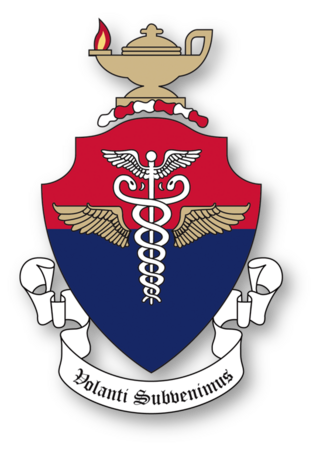
Boron is a chemical element with the symbol B and atomic number 5. In its crystalline form it is a brittle, dark, lustrous metalloid; in its amorphous form it is a brown powder. As the lightest element of the boron group it has three valence electrons for forming covalent bonds, resulting in many compounds such as boric acid, the mineral sodium borate, and the ultra-hard crystals of boron carbide and boron nitride.

Flea, the common name for the order Siphonaptera, includes 2,500 species of small flightless insects that live as external parasites of mammals and birds. Fleas live by ingesting the blood of their hosts. Adult fleas grow to about 3 millimetres long, are usually brown, and have bodies that are "flattened" sideways or narrow, enabling them to move through their hosts' fur or feathers. They lack wings; their hind legs are extremely well adapted for jumping. Their claws keep them from being dislodged, and their mouthparts are adapted for piercing skin and sucking blood. They can leap 50 times their body length, a feat second only to jumps made by another group of insects, the superfamily of froghoppers. Flea larvae are worm-like, with no limbs; they have chewing mouthparts and feed on organic debris left on their hosts' skin.

The gregarines are a group of Apicomplexan alveolates, classified as the Gregarinasina or Gregarinia. The large parasites inhabit the intestines of many invertebrates. They are not found in any vertebrates. However, gregarines are closely related to both Toxoplasma and Plasmodium, which cause toxoplasmosis and malaria, respectively. Both protists use protein complexes similar to those that are formed by the gregarines for gliding motility and invading target cells. This makes them excellent models for studying gliding motility with the goal of developing treatment options for toxoplasmosis and malaria. Thousands of different species of gregarines are expected to be found in insects, and 99% of these gregarines still need to be described. Each insect can be the host of multiple species. One of the most studied gregarines is Gregarina garnhami. In general, gregarines are regarded as very successful parasites, as their hosts are spread over the entire planet.

The Egyptian tomb bat is a species of sac-winged bat in the family Emballonuridae. It is a medium- to large-sized microbat with a mass of approximately 30 g (1.1 oz). It is an aerial insectivore, foraging in open space. Based on individuals captured in Ethiopia, it is thought to feed predominantly on Lepidoptera, but is also known to feed on Isoptera, Coleoptera and Orthoptera.

Nitenpyram is a chemical frequently used as an insecticide in agriculture and veterinary medicine. The compound is an insect neurotoxin belonging to the class of neonicotinoids which works by blocking neural signaling of the central nervous system. It does so by binding irreversibly to the nicotinic acetylcholine receptor (nACHr) causing a stop of the flow of ions in the postsynaptic membrane of neurons leading to paralysis and death. Nitenpyram is highly selective towards the variation of the nACHr which insects possess, and has seen extensive use in targeted, insecticide applications.

Hectopsyllidae is a small family of fleas, containing only the chigoe flea Tunga penetrans and the genus Hectopsylla. They were formerly known as Tungidae, and by authorities that demote the Pulicoidea to family rank they are treated as subfamily Hectopsyllinae. Only 2 genera with some handfuls of species are placed here nowadays, making further subdivision of the family unnecessary.

The human flea – once also called the house flea – is a cosmopolitan flea species that has, in spite of the common name, a wide host spectrum. It is one of six species in the genus Pulex; the other five are all confined to the Nearctic and Neotropical realms. The species is thought to have originated in South America, where its original host may have been the guinea pig or peccary.
Paleoparasitology is the study of parasites from the past, and their interactions with hosts and vectors; it is a subfield of Paleontology, the study of living organisms from the past. Some authors define this term more narrowly, as "Paleoparasitology is the study of parasites in archaeological material." (p. 103) K.J. Reinhard suggests that the term "archaeoparasitology" be applied to "... all parasitological remains excavated from archaeological contexts ... derived from human activity" and that "the term 'paleoparasitology' be applied to studies of nonhuman, paleontological material." (p. 233) This article follows Reinhard's suggestion and discusses the protozoan and animal parasites of non-human animals and plants from the past, while those from humans and our hominid ancestors are covered in archaeoparasitology.

The dog flea is a species of flea that lives as an ectoparasite on a wide variety of mammals, particularly the domestic dog and cat. It closely resembles the cat flea, Ctenocephalides felis, which can live on a wider range of animals and is generally more prevalent worldwide.

Xenopsylla is a flea genus in the family Pulicidae.

The Pulicidae are a flea family in the order Siphonaptera. Currently, this family has 181 species in 27 genera. Of these, 16 are known from North America.

The Archaeopsyllini form a flea tribe in the family Pulicidae.
The Moeopsyllini form a flea tribe in the family Pulicidae.
The Pulicinae form a flea subfamily in the family Pulicidae.
The Spilopsyllinae form a flea subfamily in the family Pulicidae.

Ctenocephalides is a flea genus in the tribe Archaeopsyllini which includes the cat flea, Ctenocephalides felis and the dog flea, C canis. Species and subspecies in the genus infest a wide variety of hosts, including sheep and goats, wild carnivores, hares, hyraxes, ground squirrels and hedgehogs.
This list of fossil arthropods described in 2012 is a list of new taxa of trilobites, fossil insects, crustaceans, arachnids and other fossil arthropods of every kind that have been described during the year 2012. The list only includes taxa at the level of genus or species.
Spilopsyllus cuniculi, the rabbit flea, is a species of flea in the family Pulicidae. It is an external parasite of rabbits and hares and is occasionally found on cats and dogs and also certain seabirds that nest in burrows. It can act as a vector for the virus that causes the rabbit disease myxomatosis.

Hystrichopsylla schefferi, also known as the mountain beaver flea and giant mountain beaver flea, is a parasitic nearctic insect belonging to the order Siphonaptera, the fleas. With an adult body length of as much as 0.5 inches (13 mm), it is the largest living flea in the world, and is native to the American Northwest. Though most members of the genus Hystrichopsylla are not strongly associated with any particular host animal and will parasitize insectivores and rodents generally, H. schefferi is monoxenously associated with the mountain beaver with which its range is coterminous. The fleas of the family Hystrichopsyllidae, along with the family Pulicidae, are the oldest of fleas in evolutionary history. H. schefferi can be distinguished from the very similar and closely related species Hystrichopsylla gigas dippiei by the number of spines in the pronotal comb, as H. g. dippiei has 36 and H. schefferi has 46.

The United States Air Force School of Aerospace Medicine (USAFSAM) is the United States Air Force (USAF) organization focused on education, research, and operational consultation in aerospace and operational medicine. USAFSAM was founded in 1918 to conduct research into the medical and physiologic domains related to human flight, and as a school for medical officers trained to support military aviation operations, later coined as flight surgeons. The school supported early military aviation from World War I through the evolution of aviation and into the modern era. USAFSAM conducted medical research and provided medical support for the initial US space operations beginning in 1947 through the establishment of NASA in 1958. After the creation of NASA, USAFSAM continued to actively support civilian and military manned space missions through clinical and physiologic research. USAFSAM is one of the oldest continually operating school for flight surgeons and other operational medical personnel of its kind in the world. USAFSAM is located in Dayton, Ohio at Wright-Patterson Air Force Base, and is part of the 711th Human Performance Wing and the Air Force Research Laboratory (AFRL).












